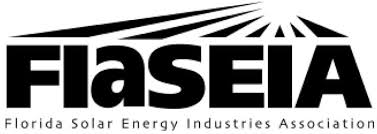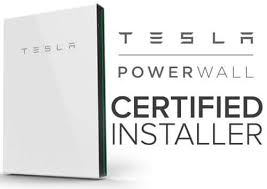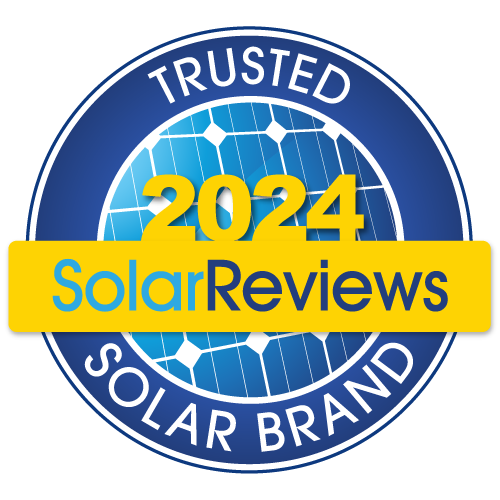What tax credits are available for solar-powered systems?

A1A Solar explains the investment tax credit
 It’s tax season, which always brings a lot of questions about claiming solar on taxes. Remember, we’re solar people, not tax people, so it’s always best to consult a tax professional before filing your tax credit.
It’s tax season, which always brings a lot of questions about claiming solar on taxes. Remember, we’re solar people, not tax people, so it’s always best to consult a tax professional before filing your tax credit.
Here’s an overview of what the solar tax credit is and how to file for it:
What is the ITC?
The investment tax credit (ITC) is a 30-percent tax credit for solar-powered systems on residential and commercial properties.
Approved credits
According to TurboTax, “Installing alternative energy equipment in your home can qualify you for a credit equal to 30 percent of your total cost. The credit is available through the end of 2019. After that, the percentage steps down each year and then stops at the end of 2021.” The equipment that qualifies for a tax credit includes solar-powered units that generate electricity or heat water.
Requirements
You must own your solar-powered system rather than lease it. You’re also eligible to claim the solar tax credit even if the solar energy system is not on your primary residence – as long as you own the property and live in it for part of the year.
Filing steps
- First, determine if you are eligible for the federal ITC.
- Complete IRS Form 5965 to validate your qualification for renewable energy credits.
- Add your renewable energy credit information to your typical Form 1040.
With current solar incentives, the initial solar investment cost is drastically reduced, accelerating return on investment and payback scenarios. These generous local/state rebates and federal tax credits make it an easier decision to invest in solar.
What changes will occur in my Northeast Florida home after solar panel installation?

What happens once I have a solar PV system in my residential home?

So, you’ve finally installed that solar panel in your home, and you’re wondering, what now? After installation, you’ll notice a few changes in your household. Here’s what to look for:
- Meter change
After your solar panel installation, it’s imperative that you replace your meter. Without a new meter, you won’t be able to connect your solar panel to the grid. A1A Solar contacts your energy provider and ensures that you receive a new meter. - Temperature
According to a study by University of California, San Diego, solar panels help cool your home. Results showed that during the day, rooms with solar panels on the roofs above them were 5 F cooler than rooms without solar panels. Your solar panels will also help you stay warm in the winter. At night, the panels hold heat acquired throughout the day. This helps reduce heating costs in cold temperatures and keeps your house warm and cozy. - Home value
A Berkeley Lab research team found that people are willing to pay more for homes that have solar panels. The study showed that homes with solar PV systems received a premium of up to $15,000 over homes without. - Noise
Some homeowners worry that solar panels will be noisy. The inverter from the panel will produce a buzzing noise, however, it’s not usually any louder than an air conditioning unit. If the inverter is near a bedroom window, keep in mind that solar panels work during the day. This means the inverter switches off at night, leaving you to sleep in peace. - Savings
One of the best parts about your new solar panel is that you are producing your own energy. Your home will use the electricity that your solar panel produces and any unused energy goes back to your grid. This is where feed-in tariffs come into play. The government began feed-in tariffs with the intention of encouraging people to produce renewable energy. Feed-in tariffs aside, you still stand to make a profit with your new installation. According to Forbes, the average person saves $84 a month on electricity bills. - Your home’s carbon footprint
One of the biggest changes after the installation of your solar panel system is your home’s carbon footprint. Your carbon footprint will decrease by an average of 35,180 pounds of carbon dioxide per year. This is equivalent to planting 88 trees per year.
There are many advantages to installing a solar system in your home.
A1A Solar answers your questions about caring for your solar panels in Northeast Florida
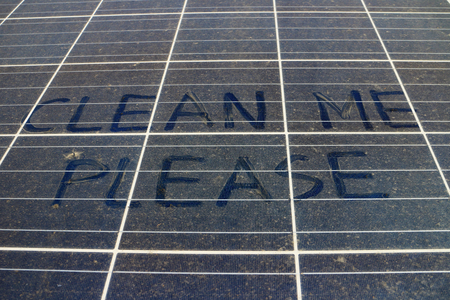

If you’re considering rooftop solar panels for your home or business, you probably have many questions. A1A Solar is here to help by answering some of your toughest questions and providing you with the information you need.
Question 1: Do leaves and twigs impair solar panels?
If you look at your roof right now, you might see lots of foliage, twigs and even the occasional lost ball or Frisbee. You may be wondering if this debris will hinder your rooftop solar panels.
For the best performance of your rooftop solar panels, it’s smart to trim trees and bushes periodically, which allows for maximum sunlight. This may also lessen the possibility of leaves and twigs getting stuck. Additionally, make sure the installer you choose has experience in dealing with all kinds of roofs and conditions, so they can provide advice on catching small problems before they become big headaches.
Question 2: Do I have to inspect my solar panels?
Rooftop solar panels work like a well-oiled machine to convert sunlight to energy and make your home or business more efficient. Still, it’s a complex system full of technology.
Having clean panels may help increase your energy potential. You can clear off any debris, but for material you can’t get to or anything more serious, it’s probably best to contact your rooftop solar panel company. Experts recommend that you clean your rooftop solar panels once or twice a year. Before purchasing your solar panels, check the contract to find out about any regularly scheduled maintenance provided and available warranties.
Question 3: Does the weather in my area affect the cleanliness of rooftop solar panels?
Dust, pollen, debris and animals can impact your rooftop solar panels. In most cases, since the panels are typically installed at an angle, the next rain should be sufficient to wash much of it away. However, if your area experiences heavy winds or very little rain, you might have to clean your panels more often. It’s wise to monitor your system’s output to discover any difference in performance before and after you have the panels cleaned.
Question 4: Do I have to go on the roof and clean the panels myself?
For most people, rooftop solar panels are basically self-cleaning. Regular rainfall should be enough to keep the solar panels clean. What Mother Nature doesn’t handle, trust A1A Solar to help.
We provide services to clean solar panel arrays and inspect battery systems. When you choose A1A Solar for your rooftop solar panel system, we are with you every step of the way, from drafting the plans for your unique home or business to inspection and evaluation.
Where to install your solar panel system

We discover which location works best for your home.
 When it comes to solar panels, people often think of rooftops. What most people don’t realize is there are actually multiple locations for installing solar panel systems. Location, building type and space are the main factors in determining which location works best for you. Whether it’s your family home or your work’s office building, it’s important to consider all your options.
When it comes to solar panels, people often think of rooftops. What most people don’t realize is there are actually multiple locations for installing solar panel systems. Location, building type and space are the main factors in determining which location works best for you. Whether it’s your family home or your work’s office building, it’s important to consider all your options.
Here are two locations for installing your solar panels:
- Rooftop
Rooftops are the most common location for installing solar panels. In order to get the most out of your solar panel, you need to install it wherever it will receive maximum sunlight. This is why rooftop solar panels are so popular. It’s best if your roof faces south in order to get the most direct sunlight throughout the course of the day. However, east- and west-facing roofs can still save money and reduce electricity bills. Large square roofs are optimal and the easiest for installation. Before installation, be sure there are no large trees, buildings or tall items blocking your roof – rooftops in the shade may not provide the amount of energy you need. - Ground
Ground solar panels are just as easy to install as rooftop solar panels. Usually, ground-mounted solar panels cost as much as rooftop solar panels, if you’re going by a per-watt basis. When installing a solar panel, direct sunlight is the most important thing. This means you generally want your panels facing south and angled toward the sun.Installing your panels on the roof produces limitations – you may not be able to adjust which direction or angle the panels face after installation. Most roofs also have obstructions like chimneys or skylights, which sometimes makes ground solar panels a better alternative. One of the main advantages of ground solar panels is space. If your residential or commercial building requires a lot of electricity, sometimes the roof isn’t big enough. Ground solar panels allow you to utilize your lawn or even your parking lot to create a space big enough to generate the amount of energy you need.Both the roof and the ground are great options for solar panel installation. However, many factors go into choosing the right location. While your neighbor may benefit from a rooftop solar panel, a ground installation might interest you more. We have engineers who draft plans to ensure proper placement of solar panels on your home that yield the highest possible results.
What happens to solar panels in a hurricane?
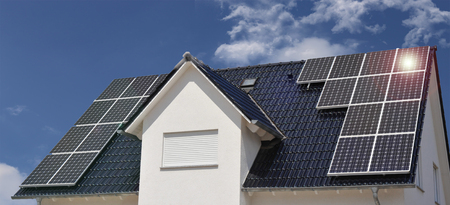
A1A Solar provides insight on weather and solar panels

For Floridians, hurricane season is an inevitable part of each year that causes worry and panic. It’s important to make sure that your home is ready for a hurricane and that it can withstand the high-speed winds. If you have solar panels on your home and live in an area prone to hurricanes, you might wonder how the extreme weather will impact your solar panels. The good news is that solar panels hold up quite well during hurricanes.
Manufacturers build Florida’s solar panels strong with hurricanes in mind
Florida has strict wind codes in place to ensure manufacturers build solar panels to withstand hurricane winds. They must meet the requirements of the Florida Building Code, in effect since 2010. The code requires that the components and cladding of solar panels tolerate wind loads they may endure. Many areas in Florida call for installations to withstand 160 mph minimum winds. Solar companies install solar systems based on engineered drawings – and local building departments inspect them accordingly.
Solar companies must securely attach solar panels to a building with ample attachment points to resist wind uplift. They fasten them with a mounting system that anchors the roof sheathing with lag screws into the roof trusses, which reinforces the roof and makes it stronger. This makes Florida solar panels less susceptible to damage from blowing debris in a storm.
In some cases, solar panels and the roof below actually fare better than non-solar areas during and after a hurricane. And, the same basic risks of a hurricane exist with or without solar panels. For example, the whole roof could come off with the solar panels still attached, or your roof and solar panels are fine, while your neighbor experiences severe damage.
Florida’s 2017 hurricane season
After Hurricane Irma, there were no catastrophic or widespread reports of solar panel damage in Southwest Florida. The industry didn’t get away completely unscathed as there were a few reports of the wind plucking isolated panels from roofs. However, there were no leaking issues because the attachments didn’t pull out of roofs – the panels flex to give way and bow out from where they come out of their clamps.
Because most solar panel systems are microinverter-based, the systems worked effectively until power returned. There were also no reports of battery backup systems having issues. Overall, out of the tens of thousands of homes with solar panels, the hurricane affected an extremely low number.
What property managers need to know about rooftop solar panels
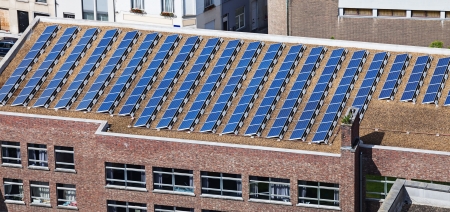
Solar energy has never been so affordable for companies

According to the United States Department of Energy, solar energy is becoming more popular in the US every year. A1A Solar just completed Florida’s largest rooftop solar array on a popular furniture retail store. The energy system consists of 5,742 solar panels and provides up to 50 percent of the building’s power consumption. With many companies following suit, there are a number of things property managers need to know about rooftop maintenance.
Here is some helpful information regarding operating costs, preventative measures and maintenance for commercial rooftop solar panels:
- Operating costs
Evolving technology helps place commercial solar panel costs within reach for most companies. With the help of solar energy, your monthly energy bills will decrease. Many companies earn 15 to 25 percent in after-tax returns while using solar panels. This helps generate thousands of dollars in savings a year. A1A Solar strives to provide systems that create as much electricity as the company is using to “zero out” electricity consumption. Solar energy system owners receive credit through net metering for the electricity their solar panels produce. With net metering, you only pay for the energy you use beyond what your system generates. Be sure to do your research because net metering policies differ depending on the state. - Preventative measures
Before installing solar panels, make sure your roof is in good shape structurally. Most warranties last for 20 to 25 years. If your roof is going to need renovations in the near future, it’s easier to deal with them before the panels go up. This will save you both time and money. A key point of upkeep is foliage. If your company building has many large trees surrounding it, you’ll want to prune all branches and keep them from blocking the panels. - Maintenance
The great thing about solar panels is that they require little to no maintenance. Panels have a 25- to 45-year lifespan, only requiring a cleaning a few times a year. Inspection and cleaning are imperative to ensure that bird droppings, dirt and debris are not blocking absorption of the sun. The best time for a cleaning is early morning or late afternoon. Be careful: Running cold water over hot panels can cause them to crack. If your company’s roof is too high to reach, you can install an automated cleaner or hire a professional roof cleaner.
As the popularity of solar systems rises, you should think about installing one for your company. With solar panels being so affordable, how could it not be a good investment? When the time comes to make the purchase, these key points will help guide you through the operating costs, preventative measures and maintenance.
What to expect after installing solar panels

7 changes you’ll see after solar panel installation

So, you’ve installed solar panels in your home. What happens next? While the system itself is an initial investment, it offers immediate as well as long-term financial and environmental benefits. Here are seven changes you’ll see after your solar panel installation:
- Home value increase
On average, the investment in solar panels increases the home’s resale value by approximately 3.5 percent. According to a Berkeley Lab study, homebuyers are consistently willing to pay more for a home with a PV system across a variety of states, architectural styles and housing markets. - Return on investment.
In many cases, the increased value exceeds the installation price, providing an instant return on investment. In the first year, most homeowners see about a 7 percent annual return in energy costs on their solar investment. - Meter spins backward.
More likely than not, you’ll watch your power meter run backward after you go solar. Your meter tracks and records the energy that your PV system produces. This electrical meter reverses when your PV system makes more energy than your home uses. If you reach net-zero, which is when you have enough solar panels to harvest the same average number of kilowatt-hours that your home uses per day, your meter will spin backward as much as forward in a typical year. - Electric bill reduction.
An average Florida home experiences a 70 to 90 percent electricity cost reduction with a grid-tied PV system. Typically, reaching net-zero, where you offset your entire energy usage, will reduce electric bills by about 90 percent as a result of utility base rate charges, taxes and government fees. - Decrease of carbon footprint.
By using solar power, you’re reducing harmful electricity emissions because you’re no longer generating carbon dioxide through electrical use. This offset of carbon dioxide helps conserve thousands of gallons of water per year. The Solar Energy Industries Association revealed that the solar industry offset 37 million metric tons of CO2 emissions and reduced carbon emissions – equivalent to planting 956 million trees. By switching to solar, you’re immediately contributing to these numbers and helping the environment. - Solar-powered air conditioning.
Your PV system will be able to run your air conditioning. It’s tied into the main building service panel, thus providing power to the whole house instead of just one appliance. - Backup power if the utility power fails.
If your PV system has battery backup, then you’ll still have backup power when utility power goes out. If your home has a grid-interconnected PV system, it’s not storing energy and will automatically shut down if the utility power goes out. This ensures that a PV system won’t back feed and put utility workers in harm’s way.
It’s important to consider that each home and PV system is unique. Net-zero may not be possible in every home, as it depends on electric consumption relative to roof area available.
How solar energy has evolved over the past 5 years

A1A Solar shows you why now is a great time to go solar
 It’s no secret that the rooftop solar industry is constantly evolving. The good news is that time has brought positive changes for solar energy. Over the last five years, rooftop solar panels have increasingly become more efficient and affordable. Improvements in the industry mean more benefits for customers.
It’s no secret that the rooftop solar industry is constantly evolving. The good news is that time has brought positive changes for solar energy. Over the last five years, rooftop solar panels have increasingly become more efficient and affordable. Improvements in the industry mean more benefits for customers.
Improvements and efficiency
Technological advancements are responsible for better, more reliable solar photovoltaic (PV) systems. Five years ago, the most efficient solar panel you could purchase was 17.8 percent efficient. Now, solar panels ranging from 20 percent to 23 percent efficient are readily available to homeowners.
In comparison to the heavy, hard-to-manage systems of the past, modern solar panels produced in the past five years are lighter and do not require as much rewiring or hardware to install. This leads to quicker, one-day installations for homeowners and business owners.
New technologies in solar energy
- sonnenBatterie: This smart and reliable energy system provides backup power and also maximizes solar use every day of the year. The sonnenBatterie allows customers to continue using their solar panels even when the grid goes down.
- Flexible printed solar panels: Industrial printers started manufacturing solar cells as thin as paper in 2015. The printed solar panels are flexible, produce up to 50 watts per square meter, are inexpensive to make and have 20 percent conversion efficiency. However, the printed panels are still undergoing testing since they’re highly susceptible to moisture problems and could result in lead contamination if broken.
- Microinverters: A new alternative to traditional inverters, microinverters improve the efficiency of a solar system by converting the electricity supplied by each panel individually.
Falling prices in the solar industry
According to the Solar Energy Industries Association, solar prices have dropped 55 percent over the last five years. Over the past decade, the average gross cost for a standard 6-kilowatt home solar system has decreased from $52,920 to $20,160. Quicker installation times helped contribute to the fall in prices. The overall reduction of prices enables the industry to expand into new markets and deploy thousands of solar systems throughout the nation. In Florida, A1A Solar Contracting is the No. 1 residential rooftop solar contractor, according to Solar Power World Magazine.
Lawrence Berkeley National Laboratory’s report reveals that since 2012, module prices have stayed relatively stable while installed prices have continued to decline. Because the price of solar panels themselves has not changed much during this time, this means that the drop in installed cost was the result of a decline in the cost of inverters that convert solar power to AC power as well as other factors such as installation and system design.
Converting to solar energy
With efficiency increasing, more power is produced in less space. This is great news for homeowners and business owners because it means fewer panels to purchase, more energy and more savings!
Solar power for your home is more attainable today than ever before.








